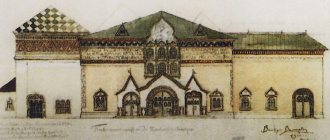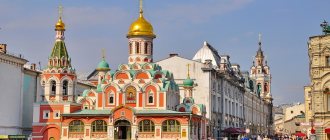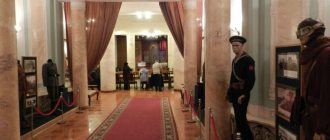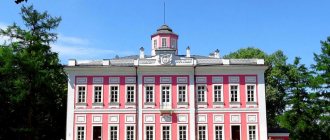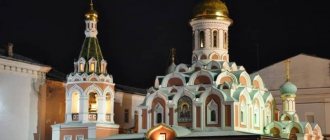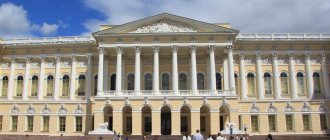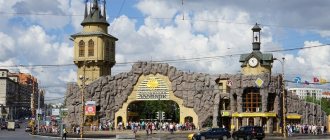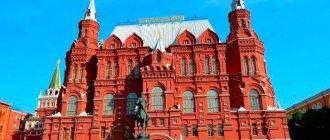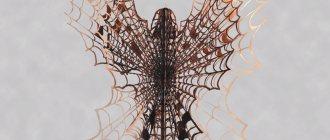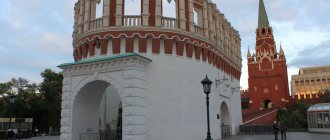Every self-respecting world capital must have its own art museum. Examples? Please! The Metropolitan in New York, the Prado in Madrid, of course, the Louvre in Paris. There is the National Gallery in London, and the Tretyakov Gallery in Moscow.
She is the pearl of the capital, one of its symbols with the real face of Russian art. Moreover, the Tretyakov Gallery houses the largest collection of Russian fine art from the 11th and 21st centuries, from ancient icon painting to modern avant-garde.
Tourists from all over the world strive to discover this treasury of paintings: if you have not been to the Tretyakov Gallery, you have not known the Russian soul!
Its halls are visited by both those who are far from art and those who are ready to spend hours looking at great paintings, the play of light and shadow, brilliant plots and priceless icons. And the Tretyakov Gallery has continued to stand on its four pillars for more than 160 years: preservation, research, presentation and popularization of Russian art.
Correct location
First, decide on the exact address: The Tretyakov Gallery is a large museum that has many buildings and branches. The main building, which houses a collection of Russian art before the beginning of the 20th century, is located at Lavrushinsky Lane, 10; in the neighboring building, the Engineering Building, temporary exhibitions are held and lectures are given. To see the art of the 20th–21st centuries, you will have to go to a completely different area of Moscow, to Krymsky Val, 10. Don’t get confused! Many other branches, including the Vasnetsov House and Golubkina's workshop, are scattered throughout the capital.
First floor
Second floor
Founding father of the gallery
Without a doubt, without the merchant Pavel Tretyakov there would be no art gallery. It is to him that Moscow owes the opening of the art museum. But Pavel Mikhailovich had not the slightest connection to culture: his family was engaged in commerce, and he had no choice but to get involved in his parents’ business. Tretyakov continued the famous merchant family, but the young manufacturer did not abandon his thoughts about art. At the age of 24, he acquired two oil paintings by artists V. Khudyakov and N. Schilder, which the public had not heard of. But today their names are known to connoisseurs and art lovers. From this moment in 1856, the beginning of the Tretyakov collection and the future gallery began.
The merchant dreamed of opening a museum of Russian painting. He studied the art market and acquired the best paintings from the late 50s.
Pavel Tretyakov was not just a collector, but a person with broad cultural knowledge. Even the artists themselves called his instincts devilish, and Tretyakov himself said that he worked exclusively for the Russian people. He did not miss exhibitions in the capitals, visited workshops and bought works of art even before they appeared on display. They said that even the tsar, approaching the paintings that he liked, saw the sign “Bought by P.M. Tretyakov."
The famous philanthropist and collector not only collected paintings by outstanding artists, but also supported beginners and promoted their work. Through the efforts of Pavel Mikhailovich, many geniuses of painting of the late 19th century became known.
It is known that he was especially interested in the Itinerants: his house was even called that - the house of the Itinerants. In fact, some of the modern painters, for example, I. Kramskoy, lived within its walls. The famous portrait of Tretyakov himself belongs to his brush. He literally saved A. Savrasov from poverty. However, by buying up paintings that he liked, Tretyakov did not allow many artists to sink into obscurity and poverty. And he continued to acquire paintings by V. Perov, I. Shishkin and others, which became their most famous to date.
The collection of V. Vereshchagin became an expensive acquisition for the gallery. For the oriental flavor in the paintings and sketches that captured Turkestan, the patron paid 92 thousand rubles. Truly, Tretyakov managed to assemble a unique collection of portraits. He had to persuade some heroes personally, as happened with Leo Tolstoy. The patron specially commissioned artists to paint portraits of those who glorified Russia. Images of great composers, writers and musicians have forever settled in the gallery: Fyodor Dostoevsky, Nikolai Nekrasov, Mikhail Mussorgsky.
Experts speak separately about the portrait of Maria Lopukhina by master V. Borovikovsky, and call it the pearl of the collection. It was Tretyakov who managed to put an end to the rumors associated with this “bad” picture. After he acquired the work for his collection, the portrait began to be talked about as a harbinger of the imminent death of every young girl who looked at it. The fact is that notoriety followed all images of Mary, who lived an unhappy and short life, mostly because of her father, a mystic and Freemason.
Portrait of Maria Lopukhina. Creator Borovikovsky Vladimir
But under Tretyakov’s order, artists painted not only portraits. True landscapes of Russian life and historical sketches were also the collector’s passion. It is quite possible that neither contemporaries nor descendants would have ever seen the painting “Hymn of the Pythagoreans” if the patron had not ordered this now famous painting by F.A. Bronnikov.
“The Pythagoreans’ Hymn to the Rising Sun” 1869 Oil on canvas 99.7 x 161. F.A. Bronnikov.
The painting decorated the living room of the Tretyakov estate, and was the favorite work of art by the wife of the art connoisseur, Vera Nikolaevna. She supported her husband in avoiding excesses, despite his wealth. After all, by sacrificing luxury, one could save in favor of purchasing works of art. And, relying on his taste and preferences, Tretyakov continued to expand the collection. By the opening of the city gallery, the collection was already impressive: sculptures, more than 1,200 Russian paintings and more than 80 foreign ones, and half a thousand drawings.
P. M. Tretyakov decided to donate the fruits of his many years of work to Moscow in 1892. This is how the first public art museum appeared.
He was in Tretyakov’s own estate. The collection expanded, and the mansion grew along with it. Four times during the life of the patron of the arts, the family nest was upset; new walls were necessary for a rich exhibition. Of course, an artist, but also first and foremost a merchant, Tretyakov imagined what difficulties descendants might expect when maintaining such a large fund and replenishing the collection. Therefore, he bequeathed 275 thousand rubles for repairs and the acquisition of new masterpieces. In addition, he donated a truly priceless collection of ancient Russian icons. Well, during his lifetime he permanently held the post of gallery manager.
After the death of Pavel Tretyakov, the good cause of creating a museum was taken up by other philanthropists who were not indifferent to the fate of Russian art. And each of them remembered that the founding father of the gallery saw it not as a simple repository of works of art, but precisely those samples that would convey the very essence of the Russian soul. Since then, the Tretyakov Gallery has been the main museum of national art in Russia.
Stock up on a card
Virtual Museum of the Tretyakov Gallery
Since you are limited in time, we cross out the pleasure of aimlessly walking through the suite of halls. It is necessary to clearly outline the goal and lay out a route to it. In addition to paper guides, you can use the map of the halls on the museum website or use virtual museum technology.
In the Tretyakov Gallery. In front of Vasily Surikov’s painting “Boyaryna Morozova”. Natalya Volkova / photobank “Lori”
Stock up on a list of masterpieces
Decide which art of which period interests you most: this Tretyakov building contains almost the entire history, from the Baptism of Rus' to the Revolution. You can spend a whole hour on Serov, or the Peredvizhniki, or the Silver Age.
If you want to quickly look at the main masterpieces, then here is an approximate list of must-haves. The list is short, because the masterpieces are scattered across two floors and different halls, which will take an hour to navigate, because you will probably be distracted by all sorts of beauty along the way.
"Tretyakov Gallery" without Tretyakov
The bequeathed capital was enough to maintain the gallery. What was missing were rooms to house the collection. The Tretyakov merchant estate was rebuilt and acquired additions. Already in the early nineties, the famous artist Viktor Vasnetsov developed sketches from which a unique facade appeared - now it is the emblem of the museum. The neo-Russian style only emphasizes that there is a Russian spirit here and it smells of Russia.
Throughout the Soviet period, the Tretyakov Gallery changed names, types of ownership, and trustees, but invariably expanded and replenished.
Under the directorship of architect Igor Grabar, the exhibition began to be organized chronologically. The so-called European type. But the main thing is that the State Art Fund appeared, and the collection continued to grow, including through exhibits confiscated from rich private collections. The museum's collection consisted of about 4,000 exhibits. The so-called “Shusevsky” period was famous for the expansion of not only funds, but also walls: Another former merchant estate was transferred to the Tretyakov Gallery. It housed scientific departments, graphics, and a library. The Tretyakov book collection can be considered a real treasure: it contains more than 200 thousand publications about art and its movements.
The fatal forties made their own adjustments to the life of the gallery. The capital's museums were preparing for evacuation, and the Tretyakov Gallery was no exception. Her funds were taken away for more than a year. Priceless canvases were cut out of their frames, transferred to sheets of paper, closed in waterproof boxes and evacuated. 17 carriages delivered the exhibits to the capital of Siberia. But nothing could protect the Tretyakov building from bombing.
But still, post-war life turned out to be eventful. When life returned to a peaceful course and the paintings returned to their native walls, the administration and cultural workers began to prepare for the 100th anniversary of the museum.
New works of art were purchased, among which were paintings by Savrasov, Petrov-Vodkin, and Vrubel. It became clear that the existing space was catastrophically lacking, because in 1956, the anniversary year for the gallery, it contained more than 35 thousand objects of cultural value!
The issue of expansion was inherited by all the authorities of the USSR. This is how the depository and the new engineering building appeared. Under director Yu.K. The Queen received the St. Nicholas Church in Tolmachi into the museum, and the main building itself was closed for reconstruction. The collection also grew: government procurement by 1975 expanded the funds to 55 thousand paintings and sculptures.
By the mid-90s, despite any unrest, the Gallery grew by 10 rooms at once. Exhibitions of sculptures from the Middle Ages to the present day appear; entire rooms are dedicated to individual paintings. In addition, the expansion of the area made it possible to increase the exhibitions themselves.
Today the Tretyakov Gallery has more than 170,000 exhibits, among which ancient Russian icons and the Russian avant-garde are of particular pride.
The collection of works by the Itinerant artists is considered one of the most complete, and the Russian painting presented in the museum, dating back to the 12th century, is unique both in content and content.
Second floor: “Ivan the Terrible and his son Ivan November 16, 1581” (room No. 31)
Repin's painting is in the hall dedicated to the work of this artist. This is another picture that has a strong impact on the psyche. Therefore, to get yourself, be sure to check out the museum store on the ground floor, next to the ticket office. In the Tretyakov Gallery it is good: reproductions, postcards, notebooks, magnets and, of course, catalogues.
State Tretyakov Gallery
Moscow
Interesting Facts
1. The formation of the gallery as a collection of the merchant Tretyakov began with the purchase of Western European paintings, and not works of Russian artists. 2. Few people know that Pavel’s younger brother, Sergei, also took part in the creation of the gallery. 3. The emblem of the famous museum is the facade of the building. It was made according to Vasnetsov’s sketch. 4. In the museum you can find the painting “Ivan the Terrible and his son Ivan November 16, 1581.” In 1913, she was “attacked” - a man whose identity could not be established struck the canvas several times with a sharp knife. 5. During the entire existence of the Tretyakov Gallery, it was closed several times - due to thefts and during military operations. 6. In 1999, the Gallery was presented with the Miraculous Icon of the Mother of God, which, according to legend, was able to save Moscow from the attack of Khan Mahmet-Girey. 7. The idea of creating a private gallery on a huge scale came to the merchant’s mind after visiting the famous St. Petersburg Hermitage. 8. The painting that started it all – “Skirmish with Finnish Smugglers.” 9. In 1891, the first theft from the Tretyakov Gallery occurred, as a result of which 4 paintings disappeared, 2 of which were returned. 10. In the famous painting “Morning in a Pine Forest,” the bears were painted by another artist. However, Shishkin erased Savitsky's name with turpentine, leaving all the work behind him.
